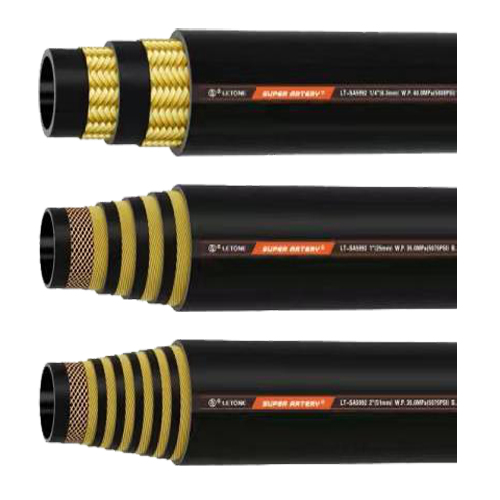What Is a Rubber Water Hose?
2023-07-05 10:52:51
Rubber water hose is a type of garden hose that resists kinking and tangling. It also resists abrasion and weather conditions. These features make them ideal for landscaping and gardening.
These hoses have a thin rubber lining inside a woven fiber jacket. They’re light, easy to handle, and don’t have a coil memory.
Durability
The durability of a rubber water hose depends on the type of material it is made from and how it is treated. A hose can be made from a variety of materials, including rubber, vinyl, and polyurethane. Rubber is the most durable, but it can be a bit heavier. A hose can also be reinforced for extra strength.
It is important to take care of your hose to extend its lifespan. Hoses left out on the ground can get kinked, run over by cars, or become damaged by sunlight. It is also a good idea to drain your hose after every use and to stow it away in the winter.
Another factor that determines the durability of a hose is its capacity to handle pressure. This is measured in pounds per square inch, or psi. The higher the psi, the stronger the hose. A high-quality hose will be labeled with its maximum psi rating.
Pressure rating
When selecting a rubber water hose, it is important to know its max working pressure. This pressure will vary depending on the type and design of the hose, but it will also depend on the temperature. For example, a hose with an aluminum or brass coupling may not be as strong as one with plastic ones.
The maximum working pressure of a hose is typically listed on the manufacturer’s label and assumes it is assembled correctly. However, many factors can affect the working pressure of a hose, including temperature and stress on the assembly.
For instance, a garden hose made of EPDM or NBR will be resistant to most chemicals, but not mineral oils. It will also have good abrasion and ozone resistance. It can handle temperatures from -50°F to +190°F and is flexible even under working pressure. It comes with a 10-year warranty. It is easy to connect and disconnect to spigots or other attachments.
Temperature range
The temperature range of rubber water hoses is important, as it indicates the maximum temperatures they can withstand. Using a hose outside of its specified temperature range can damage the hose and cause issues with performance.
Many standard hoses are not designed to hold hot water, which can damage the hose and create potential safety risks for users. However, there are a number of durable hoses available that can handle high temperatures and remain flexible.
For example, the Lavex Industrial 50' 5/8" commercial grade blue rubber hose with 3/4" GHT brass fittings is ideal for a variety of applications in commercial establishments. It is designed to be 40% lighter than standard hoses while being stronger and more resilient to wear and tear. The hose also maintains its pressure rating and flexibility in extreme weather conditions, and can withstand temperatures of up to 212 degrees Fahrenheit. The hose is also kink-resistant and features a 4-finger grip bend restrictor for easier use.
Applications
Rubber water hoses are available in a wide range of lengths, diameters, and specifications. They are suitable for use in a variety of environments and applications, including home gardening, cleaning, washing cars, and more. They are also durable and have resistance to abrasion and weather conditions, minimizing the risk of leaks or cracks.
There are many different types of rubber hoses on the market, including EPDM, NBR, and SBR. EPDM is highly resistant to most chemicals, while NBR is more resistant to mineral oils. Both are weather-resistant and have high pressure ratings. SBR is less resistant to chemicals but is more flexible and cheaper than EPDM or NBR.
Before purchasing a rubber water hose, consider the requirements of your application. Check its pressure rating and temperature range to ensure it is suitable for your needs. Additionally, evaluate whether it is safe to use with your intended chemicals. If it isn’t, you should consider silicone hoses instead.